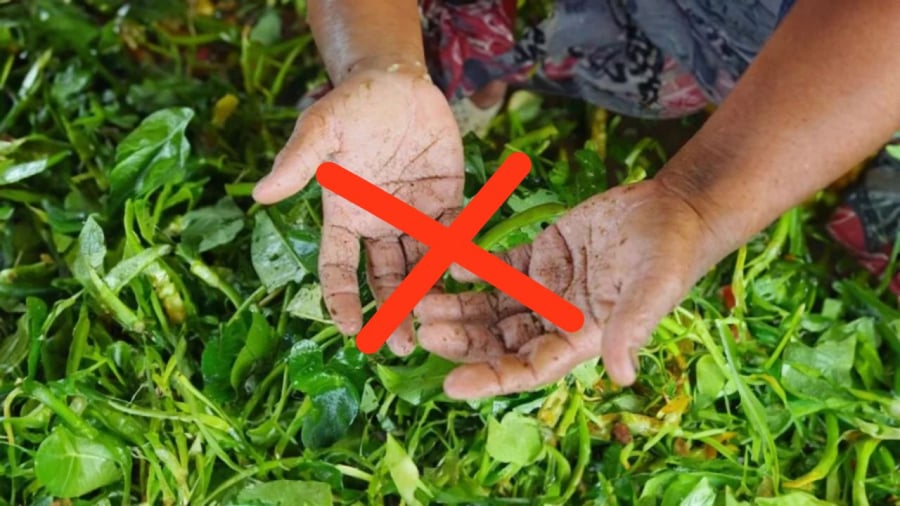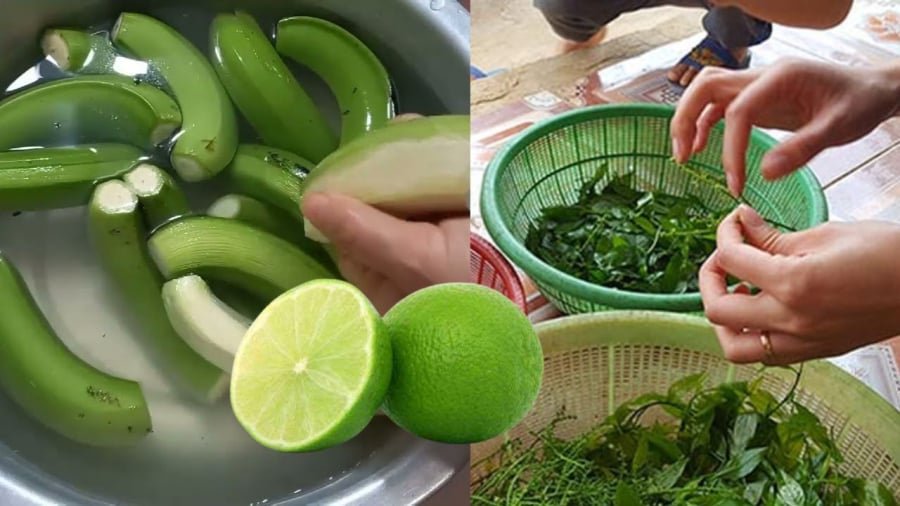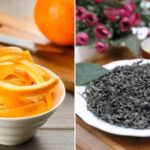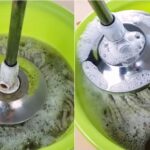Most vegetables contain a dark sap that can stain your hands when you pick or peel them. This stain can sometimes take a few days to fade. Vegetables like water spinach, mustard greens, jute mallow, sweet potato leaves, basella alba, and celery tend to release a sap that clings to your hands, leaving your skin and nails discolored. The same goes for tubers and fruits like potatoes, yam, and green bananas; their sap can easily stain your hands. To avoid this, try the following tips:
Soak your hands in lemon juice: Before handling these vegetables, fruits, or tubers, squeeze some lemon juice into a bowl and dilute it with water. Dip your hands in this solution before you start, and repeat as needed if you’re working with a large quantity.

Fig. 1: Picking vegetables and peeling fruits/tubers can lead to stained hands.
Lemon juice’s acidity prevents the sap from adhering to your skin. Keep the bowl of lemon juice handy, and dip your hands in it as needed while you work.
If you’re working with bananas, such as slicing them or preparing banana blossoms, dilute the lemon juice in a larger container of water and soak the blossoms or fruits in it. Dip your hands in the solution as you work. This will keep the banana pieces pristine and prevent staining, while also keeping your hands clean and sap-free.
White vinegar: White vinegar has a similar acidity to lemon juice, so you can use it in the same way.
Diluted rice vinegar (mẻ): Rice vinegar (mẻ) is a common ingredient in many households. If you have it on hand, you can use it as a substitute for lemon juice or vinegar. Its natural acidity will help prevent your hands from staining when exposed to the sap of these fruits and vegetables.

Fig. 2: Using lemon juice, vinegar, or rice vinegar will reduce sap adhesion to your hands.
Wear gloves: To protect your hands completely, consider wearing gloves while handling these vegetables and fruits. Thin, disposable gloves can make the process easier. If gloves aren’t available, you can use plastic bags over your hands to reduce direct contact with the sap.
Work under running water: Another way to minimize sap adhesion is to pick and peel these vegetables under running water or in a large basin of water. Diluting the sap immediately reduces its ability to stain your hands.
Treating already-stained hands
If your hands are already stained from handling these vegetables, fruits, or tubers, try rubbing them with lemon juice or lime juice. Soak your hands in the juice for a few minutes, then wash them with soap and water.
Baking soda: Baking soda is also effective at removing these stains. Mix it with a small amount of water to form a paste, then rub your hands with this mixture to restore their brightness. Baking soda is commonly used in baking to create a fluffy texture, but it’s also a powerful cleaning agent.
Additionally, when working with bananas or potatoes, be especially cautious if you have any cuts on your hands. Always wear rubber gloves in such cases. Moreover, water-grown vegetables like water spinach, creeping water primrose, and celery can harbor parasites, so it’s crucial to protect your hands from potential infection through open wounds.
The Ultimate Guide to Sparkling Clean Mop Heads: 4 Simple Steps to Banish Grimy Black Stains, Mildew and Odors for Good
Introducing the all-new, revolutionary way to keep your mop sparkling clean and germ-free! Over time, your trusty mop will inevitably change colors and become a breeding ground for bacteria. But fear not, with these simple yet effective methods, you can transform your mop back to its former glory, leaving it spotlessly clean and hygienically safe. It’s time to say goodbye to those stubborn stains and harmful germs!




































